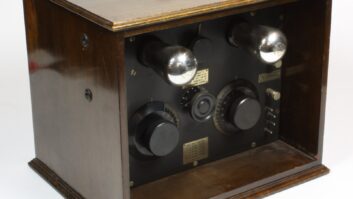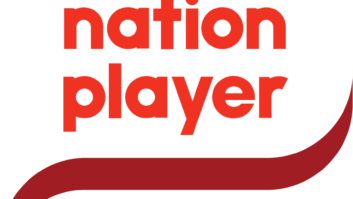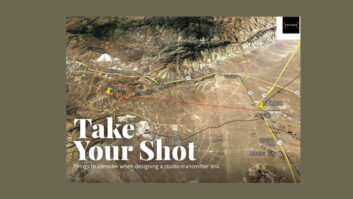128 Perth Road
ILFORD
Essex, IG2 6AS
Email: [email protected]
Tel: 020 8554 6018
Lord Patten of Barnes,
BBC Trust Chairman,
180 Great Portland Street
London W1W 5QZ
28 May 2012
Dear Lord Patten,
Matching audience demand to digital sound broadcasting
I am writing to you, in the form of an open letter, in order to express my concern about how the BBC is approaching the transition to digital sound broadcasting. I also found the outcome of the DQF consultation to be very disappointing – it manages to combine inflexibility with a pervasive “can’t do” attitude. However, I note there is the promise to undertake further technical and feasibility work, so there is still time to avoid making digitalisation synonymous with reduction in choice.
Having been involved in the early planning stages for digital sound broadcasting in the mid-1990s, while working at the Department of Trade and Industry, it seems that the potential of more recent developments in digital sound broadcasting has not been appreciated. Planners seem to be pushing forward on the premise that digital sound broadcasting should be delivered through pre-packaged programme streams on DAB, similar to how access to digital television is now organised. The way in which the audience listens to sound programming differs considerably from how television is viewed. There is a demand for a wide range of content for listening but each individual only listens to a few favoured stations, maybe only one or two per day. In contrast, viewers move between TV channels quite promiscuously, often in “zapping” mode or during commercial breaks. The “set menu” offered by the DAB platform tends to restrict listener choice rather than enhance it.
Two examples at the extreme ends of broadcast planning can be cited where rigid adherence to the one-size-fits-all DAB system is considered more important than a coherent assessment of the differing styles and coverage needs found in sound broadcasting.
One is the mooted closure of the BBC R4 long-wave service, which has been promoted on the basis of misleading technical and demographic arguments. Moreover, the conclusions of the DQF consultation ignore the national asset character of the R4 long-wave service, notably its future use as a key element in the Smart Grid project for efficient management of the electricity supply industry and meeting climate change targets. The 23-29 May issue of electronics Weekly (No. 2508, page 17) reports further on the Smart Grid project and identifies long-wave as one of the means envisaged for controlling the operation of the smart meters1 essential to the success of this project.
The other example of a lack of holistic approach in the recent consultations is the dismissal of the wide range of local/community needs in favour of wide area blocks of DAB multiplexes which, although satisfying the plans of the larger broadcasters, tends to freeze out the smaller or niche broadcasters who cannot bear the costs of sharing multiplexes.
History of digital sound broadcasting
The DAB system started development some 25 years ago as the Eureka 147 project under the technical direction of the European Broadcasting Union, with the active support of the major European broadcasters and with the BBC to the fore.
There were two main objectives:
1) to save on radio frequency spectrum by moving to single frequency networking using DAB multiplexes;
2) to overcome various degradations of FM broadcasting experienced in dense urban environments and for in-car reception.
DAB technology did indeed meet these requirements. However, the technology was optimised for the country-wide networks of large scale broadcasters, which is both its strength and its weakness. There is no guarantee that DAB will provide an efficient or cost effective solution on a smaller scale than country wide networks. In fact the spectrum savings cited as part of the design objective were optimistic even from the start. There are very few national programme streams in Europe that are transmitted without having regional or local variations for news, weather or advertising throughout the day.
In reality there is a demand for a wide variety of programming apart from national networks and top 40 stations. In particular there is a strong demand for news and content that recognises and reinforces a “sense of belonging” through broadcasting at community, local or regional levels. The more localised forms of sound broadcasting are ill-suited to transmission over wide area DAB multiplexes. Their coverage requirements may be much smaller than a single multiplex coverage or cross over the edges of several multiplexes.
In contrast, the one transmitter per service area way of delivering broadcasting services, that we are used to, has developed to provide any type or combination of national, regional, local or community broadcasting in which the target audience is served precisely through the technical characteristics of the transmitting station. The objection to that was that frequencies were being wasted because several are needed to build up a network, hence the idea to move to plan coverage using single frequency networks, which in turn leads to technologies such as DAB.
Single frequency networking assumes the content on each of the programming streams comprising the multiplex will be the same. However, sound broadcasting is hardly ever organised so that the same programme content is distributed over several regions, let alone entire countries. Content, such as regional news, weather and advertising, which varies over the coverage area is difficult to accommodate within a single frequency network.
Once regional and local variations have to be accommodated, it is no longer possible to have all the frequency blocks carrying DAB multiplexes available at every location. Some have to be left fallow because adjacent coverage areas cannot re-use the same frequency block thus reducing the number of DAB multiplexes available at any particular location and in turn negating the potential gains in spectrum efficiency envisaged when the DAB system was designed. The same also applies to trying to accommodate regional, local or community broadcasting within DAB multiplexes, although those needs were never fully considered during the development of DAB.
These points were indeed identified by the UK DTI/Radiocommunications Agency during the 1995 Detailed Spectrum Investigation carried out by the CEPT2 on behalf of the EU Commission. It was noted that only 3 or 4 of the 7 frequency blocks available to the UK then could be used at any particular location once local broadcasting and local variations in national broadcasting had to be accommodated. Planning expectations at that time
envisaged 6 FM quality stereo programme streams per multiplex, whereas it was usual then for FM listeners in major European cities to have a mixture of 30 – 40 national, regional and local programmes available – and even more now.
Regaining flexibility in sound broadcasting
In short DAB has met its set design objectives but these were, from the start, some way adrift from what listeners want and how they behave. If we end up relying on DAB for all sound broadcasting then the present level of flexibility, particularly for smaller scale broadcasting, will be lost.
With local and community broadcasters being forced into and having to pay for the straitjacket of the coverage plans of the major national and regional services in shared multiplexes, there will be a mismatch between pre-determined availability of content and the actual needs of broadcasters and audiences which goes against the very notion of local service to the local community based on local demand and supported by local groups or
advertising.
Fortunately, technology has moved on and there is an alternative technology available for digital sound broadcasting that retains all the flexibility of current analogue AM and FM broadcasting and can also provide mini-multiplex transmissions over national single frequency networks, where that is still the objective. The Digital Radio Mondiale (DRM) system developed in Europe, notably by the Fraunhofer Institute in Germany, but again with
serious BBC input, provides a high quality digital encoding scheme (essentially a development of the MP3 standard called Advanced Audio Coding (AAC)) coupled into a broadcasting system that can match the very different needs of a nationwide service such as BBC R4 long-wave down to local community stations in the medium, short-wave or FM bands.
DRM offers the advantage of being able to base coverage on the single transmitter per service infrastructure used in analogue sound broadcasting. The full, all-band DRM standard (with its two major components) has now been approved by the International Telecommunication Union for digital sound broadcasting:
1) the DRM30 standard can replace AM in the long-, medium- and short-wave bands. For the long and medium-wave bands DRM can offer a level of quality that is hard to distinguish from FM in portable radios around the house or in cars.
2) the DRM+ standard is optimised for use in the VHF broadcasting bands and can provide very high level of quality sound broadcasting matching the best of DAB and FM sound broadcasting.
DRM is able to achieve real benefits in spectrum efficiency in all circumstances. This is through being able to tailor spectrum use to actual broadcast requirements. For replacing FM transmissions on a one-for-one basis, a DRM+ transmission needs much less spectrum and energy than FM in order to provide the same high audio quality. The spectrum needed for each programme stream is about one quarter of that needed for an FM sound broadcasting channel. These advantages have been confirmed by DRM+ test transmissions carried out last April in Edinburgh by the BBC and the DRM Consortium. Moreover, DRM+ can be configured in different ways in order to offer greater flexibility than FM or DAB broadcasting. DRM+ can, for example, offer the option of allowing much more locally orientated broadcasting within 4-way mini-multiplexes using the same amount of spectrum as a single FM channel.
DRM30 can replace AM transmissions on the long-and medium-wave bands. In this case there are no spectrum savings per se, but the perceived quality on medium-wave and longwave would be closer to that of FM broadcasting, thus making better use of the available spectrum. In addition, stereo or dual language programming is also possible within the same spectrum of each broadcasting channel. The energy efficiency is considerable and can recoup in time the investment made to upgrade a transmitter or network (a fact that has not played too highly in the current debate on BBC Radio4 LW). Moreover, both DRM30 and DRM+ can operate in a single frequency network mode in those cases where a uniform programme stream over a wide area is indeed the objective. And, in contrast to DAB, there is the flexibility to decide on a case by case basis. In short, the change to DRM30 and DRM+ would make for more effective and efficient use of spectrum on several levels.
It would be a major change of policy to introduce another digital sound broadcasting system into the debate on completing the digitalisation of broadcasting in the UK. However, there is already a problem in that the coding scheme used for DAB cannot provide the same quality as FM broadcasting while making efficient use of the frequency space available in DAB multiplexes. For this reason the DAB+ system, using the same AAC scheme now also adopted by DRM30 and DRM+, is being introduced in many countries. Unfortunately DAB is not forwardly compatible with DAB+ and DAB radios manufactured before 2008 will not be able to process DAB+ transmissions. Therefore some readjustment of UK planning will have to take place anyway. The public may find further changes more digestible if moving to the higher quality, more flexible and adaptable DRM standards.
Worldwide interest in DRM
All India Radio (AIR) has chosen DRM as the technology for converting its vast analogue network to digital. This is part of its digital radio switch-over strategy where more than 70 AM transmitters are being made DRM30 capable. AIR has also been conducting tests during the last year on the feasibility of switching to DRM+ in the current FM broadcasting bands.
The progress of AIR in switching over to digital sound broadcasting in India is impressive. In contrast with the “can’t do” attitude signalled in the debate on BBC R4 long-wave, AIR announced on 3 February 2010 that it has placed an order for the supply of two 1000 kilowatt (each more than twice the power of R4 long-wave) DRM capable medium-wave transmitters. These new 1 Megawatt transmitters can be operated in analogue, in simulcast or in DRM mode with automatic change-over between the three operational modes. The transmitters will provide coverage to very large areas in the Indian sub-continent as well to the West, North, East and South-east Asia. One of these has been installed, successfully tested and is due to start commercial transmissions imminently. With a similar reengineering
of R4 long-wave, large areas of Europe could be covered in line with the EU’s policies for the audio-visual sector and encouraging cross border broadcasting.
The National Radio Company of Ukraine (NRCU) has recently announced that it plans to switch broadcasting of two Ukrainian medium-wave networks to DRM. It is expected that 85-90% coverage will be achieved with around 15 new transmitters capable of digital or analogue operation. In DRM mode electricity consumption is estimated to be one third that of the current analogue medium-wave networks.
A major problem in introducing a new broadcasting standard is of course the cost and availability of receivers. With the decision of India to re-engineer its sound broadcasting networks to use DRM, the vast manufacturing capacity of India provides at least one solution to the problem of receiver availability. Anther influential developing country, Brazil, has also been evaluating DRM, along with other new digital sound broadcasting systems, for their future sound broadcasting requirements. It is maybe a cause for regret that so-called developing countries now exhibit more vitality and foresight in undertaking major technology projects than the “developed” world.
Conclusion
I would therefore ask you to make a critical review of the DQF conclusions and consider ways in which to open up the debate on how best to make this generational switch to digital sound broadcasting. This should include making a proper analysis of what listeners really want, and how broadcasters can respond, rather than being content to rely on the one size fits all philosophy of 25 years ago which sought to treat sound broadcasting as just an offshoot of pre-packaged television broadcasting.
I hope my observations will prove useful in informing the further technical and feasibility work that has been promised.
Yours sincerely
John Shaw
1 “Smart meters typically require control relays to manage the supply of electricity. Utility companies will want to control the ability to connect or disconnect the AC supply to the smart meter by power line communications or by wireless machine-to-machine communication such as SMS, GSM or LW (http://rbiuk.ceros.com/electronics-weekly/may23/page/19)”
2 European Conference of Postal & Telecommunications Administrations (http://www.cept.org/)












